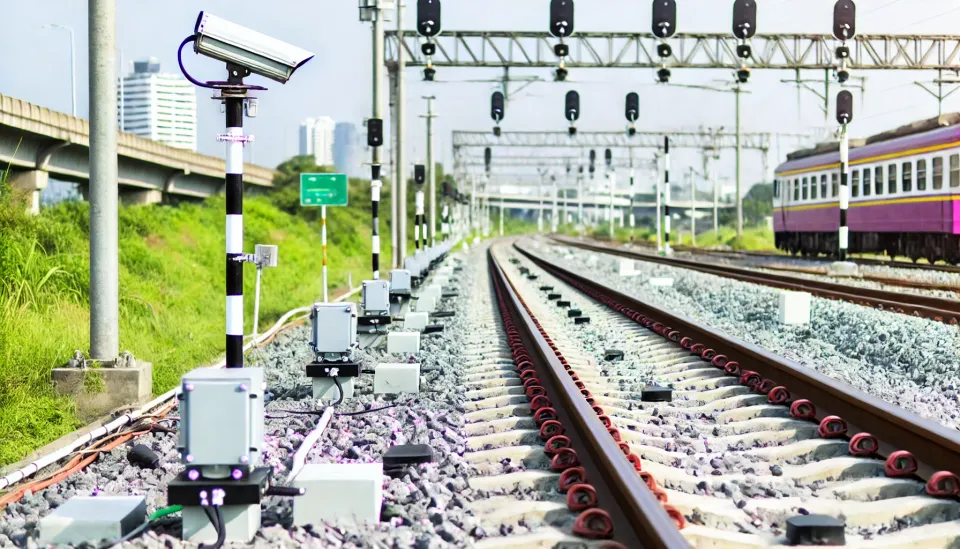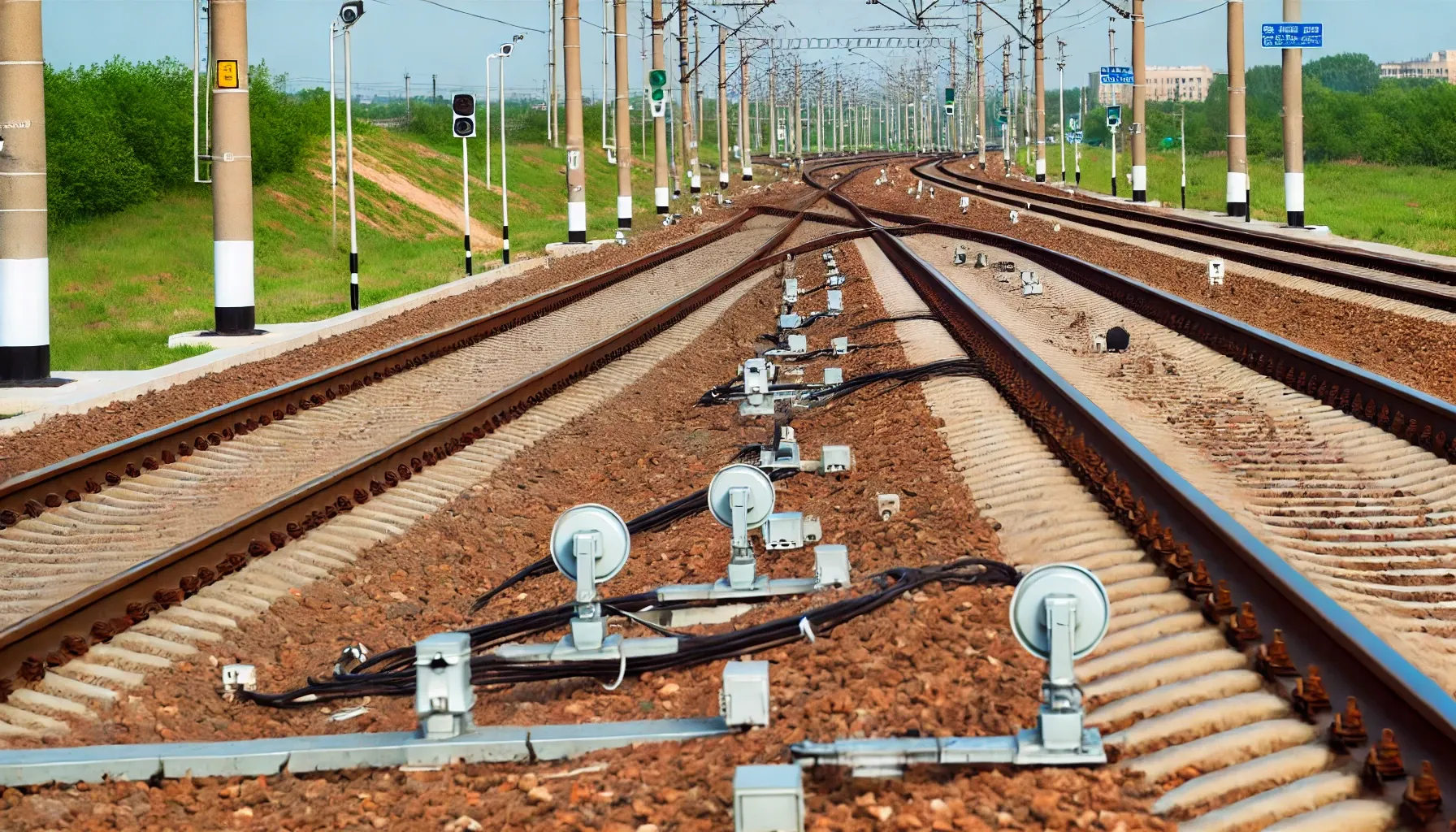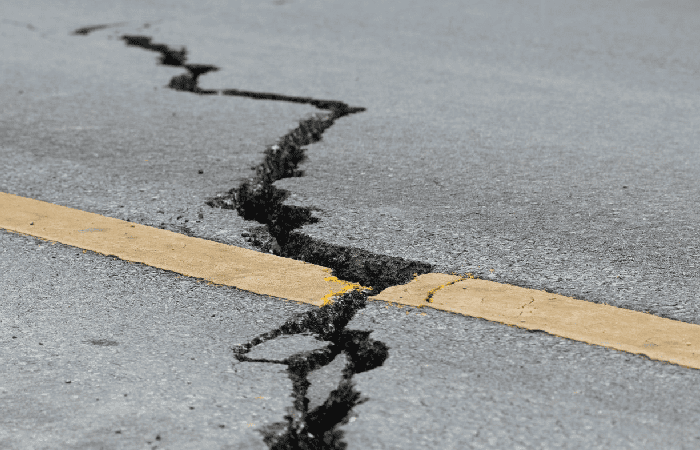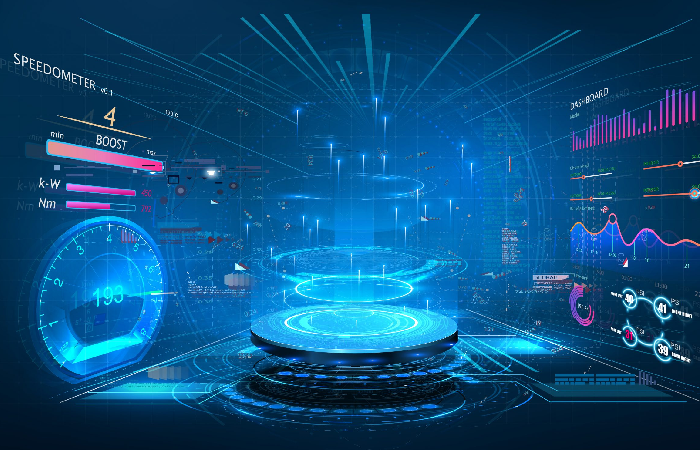Enhancing Railway Track Security with Track Intrusion Detection System (TIDS)

Is it that you want to change the way people consider railway track security and prevent future disasters before they happen? Imagine a system that can in the least time possible correctly identify unauthorized intrusions on tracks for safety enhancement, both for passengers and rail operators. Here is where the Track Intrusion Detection System (TIDS) comes in, providing state-of-the-art solutions in risk reduction and security for mission-critical infrastructure.
In this blog, we will look closely at the world of TIDS, its complex functionalities, and the important role it plays in railway security improvement. From AI algorithms for precise intrusion detection to use with video surveillance and access control, TIDS can actually change the game in track protection. Be prepared to learn how advanced technology is combined seamlessly with all kinds of security measures, making up a defense mechanism strong and impenetrable against any form of threat or unauthorized access.
Follow us in this journey through real-world implementations, success stories, and underlying technologies that power TIDS, showing how it becomes a potent ally to ensure the security and efficiency of railway operations. Let us dive into comprehensive benefits and recent advances in the area of Track Intrusion Detection Systems for a safer and more secure rail environment.
Introduction to the Track Intrusion Detection System
Rail track security is the foremost requirement for safe and secure operation of train services. The use of Track Intrusion Detection System (TIDS) technology dramatically enhances the security of railway tracks in a bid to avoid all forms of accidents.
This assures and completes the security system of critical infrastructure using a combination of sensors, cameras, and artificial intelligence algorithms for assured secure functioning. TIDS will have the ability to detect any type of unauthorized access or any possible threat that might occur on the railway tracks.
TIDS's primary role is to provide situational awareness and real-time monitoring of the track environment. It uses video surveillance, motion sensors, and access control to detect the presence of foreign objects, unauthorized individuals, or activities suspected to be hostile along the line.
TIDS is highly accurate and technologically advanced in ensuring safety on railway tracks. This would prevent accidents and, at the same time, reduce response time for security personnel to increase efficiency in overall railway operation. In-depth exploration of the core features, technologies lying under, and real-world applications of a Track Intrusion Detection System shall be brought forward through subsequent sections to highlight its effectiveness in practice as a useful safety and security tool to be used for track protection.
What is a Track Intrusion Detection System (TIDS)?
TIDS is a technology that is developed to increase the safety and security of railway tracks. The main goal for these intrusion detection systems is to alert and respond to potential intruders, guaranteeing the security of critical infrastructure on railway tracks in their quest to reduce accidents.
Major Features of TIDS
1. Cameras: The TIDS system has cameras placed along the train tracks at strategic locations. These cameras capture visual information for real-time analysis of activities around the track area.
2. Sensors: The TIDS solution is an assembly of sensors detecting different physical disturbances on the tracks. It will detect any object or person and unauthorized access trials.
3. AI Algorithms: The system incorporates artificial intelligence algorithms to process and analyze data captured by the cameras and sensors. These algorithms are trained to identify patterns of attempts to intrude and determine any potential threats with very high accuracy.
Functionality of TIDS
The TIDS acts in real time once it has detected an intrusion or suspicious activity so that necessary and probable risk-reducing action can be made. The system triggers alarms, sets on the flashing lights as a visual warning, and notifies security personnel in real-time for fast and effective interventions. TIDS combines technologies including video surveillance, motion sensors, and access controls into a single, integrated security tracking protocol. From its inception, TIDS has been very important to most transit authorities in the world because it has afforded them with a system of superior situational awareness and response mechanisms.
Finally, the Track Intrusion Detection System is also a powerful and very effective security addition for the railway tracks. This will mean that with its ability to use cameras and sensors in combination with artificial intelligence algorithms in detecting trials of intrusion, the TIDS will further halt them in less time so that all other attempts are safe and secure.
Technology Utilized in the Track Intrusion Detection System (TIDS)
Track Intrusion Detection System (TIDS) integrates a number of state-of-the-art technologies to enhance the levels of security and safety on railway tracks. TIDS provides a comprehensive solution through video surveillance, thermal imaging, motion sensors, and access control to detect and respond to potential intrusions.
Video Surveillance
Video surveillance provides visual information for track security in TIDS. High-resolution cameras are mounted at strategic positions along railway tracks to monitor activity and identify potential threats. The images are captured in real time and allow quick assessment by the security personnel of any unauthorized access or suspicious behavior. Visual information is collected and analyzed with advanced algorithms, which make it possible for a system to identify and react to a potential intrusion.
Thermal Imaging
The other crucial aspect of TIDS is the thermal imaging technology. This is because thermal cameras can detect the presence of an object by detecting its heat signature, which can even be possible at night time and under adverse weather conditions. This technology would come in handy when it comes to detecting any foreign objects that might be on the line or even spotting any particular person trying to intrude into the railway line. The inclusion of thermal imaging increases the system's capability of threat detection to high levels.
Motion Sensors
There are motion sensors installed along the rails, in addition to security. It is capable of detecting movement or any other out-of-ordinary activity within its area. As TIDS constantly monitors for any form of disturbance, it is quickly able to detect possible breaches and cause appropriate responses to occur. The role of the motion sensors goes parallel with the video surveillance system, thus making a complete and effective framework of monitoring.
Access Control
The TIDS is outfitted with access control mechanisms that prevent intrusions within the key areas located along the tracks. This technology can enable restricted entry points, with authorization for only a few people—thereby minimizing possible intrusion. The mechanisms for access control include the use of key cards, biometric identification, and secure digital credentials that safeguard against accessibility by unauthorized persons.
In conclusion, the TIDS relies on video surveillance, thermal imaging, motion sensors, and access control technologies in beefing up railway track security. This modernized technology empowers the TIDS to quickly detect and respond to any potential threats, making rail systems' operation safe and with efficiency.
How Track Intrusion Detection System Works
Track Intrusion Detection System (TIDS) is among the very sophisticated technologies directed at securing the tracks within the railway environment. In this light, the next section details how TIDS detects and appropriately responds to potential track intrusions of the railway.
Data Collection
To detect any issues along the track that could cause any problems, sensors, cameras, and other data-collection mechanisms are strategically located to monitor and collect data about the railway track environment. The sensors are strategically placed near the tracks to capture video footage, thermal imaging, motion detection, and access control logs. That much data collection enables TIDS to be aware of the whole of the rail track infrastructure.
Object Recognition
Once the data is collected, the powerful artificial intelligence algorithms in TIDS then take charge of interpreting and processing the information. Such algorithms include high pattern recognition techniques for identifying and classifying objects and activities that occur near the railway tracks. The system can analyze visual information obtained from the cameras to distinguish legitimate objects, say trains, maintenance vehicles, and authorized personnel, from possible threats, such as unauthorized individuals or foreign objects on the tracks.
Alarm Systems and Response
In the event of potential intrusion or threat, TIDS will trigger the alarm systems to notify the concerned authorities or security personnel. The warning is either an audible siren or a visual signal of flashing lights. Proper response time by the security personnel can help prevent accidents or unauthorized entries. TIDS ensures the ability to respond immediately and effectively by use of real-time situational awareness and alarms that can help mitigate the danger to railway operations and passenger safety.
All in all, combining data collection, object recognition, and alarm systems into one, the Track Intrusion Detection System (TIDS), proposes an effective manner in which to make a reliable, all-inclusive solution for securing railway tracks. TIDS tries to implement the possibility of artificial intelligence and advanced technology to improve the safety scenario of railway tracks while preventing accidents and unauthorized access.
How Artificial Intelligence is Helping TIDS
Artificial intelligence is a key player in making Track Intrusion Detection Systems more effective and accurate. Using advanced processing capabilities and pattern recognition algorithms allows TIDS to be efficiently reactive toward possible intrusions on the railway.

Advanced Processing for the Optimized Detection of Intrusion
TIDS works on AI algorithms that process real-time data flowing in from any source, like cameras, sensors, or other surveillance devices. The algorithms have been developed to deal with large chunks of visual information and quickly identify possible threats or cases of unauthorized access with speed and precision. Anomalies are detected swiftly due to the rapid processing of data, therefore reducing the chances of accidents or any damage being caused to the rail infrastructure.
Pattern Recognition for Enhanced Security
The pattern recognition in the system separates normal railway activities from suspicious activities, such as crossing irregularly or climbing the fences, or any other way in which the intrusion attempts are being made on rail tracks. Based on these patterns and many others, TIDS will issue a real-time alert to relevant authorities in charge of security and who will be ready and quick to respond to contain and reduce any potential risk.
Continuous Learning for Adaptability
Another merit of AI in TIDS is its capability of learning and adapting continuously with novel threats and intrusion techniques. TIDS can further enhance its intrusion detection capability by the use of machine learning algorithms, which will help improve, over time, by sifting historical data to identify new patterns of intrusion trials. Such adaptive learning allows the system to gain reliability and stay ahead of any other possible threat.
Streamlined Decision-Making for Rapid Response
It is such AI algorithms that could allow TIDS to make autonomous decisions through predefined rules and thresholds. On the other hand, the instant the system detects an intrusion, it can automatically activate responses such as sounding alarms, sending alert messages to security personnel, and even autonomously controlling access to critical areas. This would reduce the time taken by the security personnel in responding and help ensure quick and efficient response to any form of threat.
To sum up, artificial intelligence is the key that will make it possible to improve the potential of the Track Intrusion Detection Systems. With advanced processing, pattern recognition, continuous learning, and improved decision-making, the systems would, therefore, offer optimal efficiency and effectiveness in detecting and preventing intrusions on railway tracks.
How TIDS is Benefiting Transit Authorities Worldwide
Transit authorities are increasingly applying Track Intrusion Detection System (TIDS) for railway track security enhancement and accident prevention. TIDS is utilized in safeguarding critical infrastructure and in ensuring that passengers remain safe. Some real-world implementations and success stories of the TIDS are as follows:
Better Security and Efficiency at Busy Stations
Security at highly congested stations has gone up several notches with TIDS. Through video surveillance, motion detectors, and access control systems, TIDS detects unauthorized access and probable threats much faster. With the inception of TIDS, the cases of trespassing and suspicious activities have dramatically reduced, mention the authorities, hence providing a much safer environment for passengers and station staff. TIDS also helps security personnel to react much more quickly, helping them come back to any breach situation and keeping station platforms organized.
Avoid Accidents and Detection of Foreign Objects
TIDS has been at the center of avoiding accidents due to foreign objects on the railway tracks. Advanced cameras and AI algorithms at the TIDS processing level provide visual information regarding the recognition of any foreign object. If an obstacle is detected, TIDS triggers an alarm system to alert security personnel in the quick response operation of removing the obstacle. Such systems have averted potential disasters of derailments and collisions for passengers and given enhanced safety with efficient operation in railways. Seamless Integration and Comprehensive Solutions
All over, transit authorities have been heard to compliment TIDS for seamlessly integrating existing security systems. TIDS can easily be integrated with CCTV, thermal imaging, and much more to provide an all-round security solution. TIDS offers a formidable combination of technologies to enable a stronger and more reliable security system through substantial false alarm reduction and improvement in threat detection accuracy. It is now broadly adopted, and as a result of its occurrence, TIDS can be taken as another essential part of a good efficient and effective railway track security strategy.
Conclusion
TIDS has remained a sophisticated and reliable solution for upgrading the security status on the railway track. Its implementation brought safety at stations, a reduction in accidents, and proactive deterrence of unauthorized intrusion. Transit authorities around the world have and continue to benefit from the power of TIDS in protecting this critical infrastructure while ensuring that railway networks operate smoothly and safely.
ExterNetworks is a technology house in New Jersey that has contributed a lot to the security of railway tracks by its advanced Track Intrusion Detection System. ExterNetworks' TIDS, developed with the latest video surveillance and thermal imaging technology with AI pattern recognition, allows for complete monitoring with lightning-fast response mechanisms. This is where ExterNetworks' innovative solutions come into place with quick and effective detection to avert possible intrusions, thus securing safety and reliability for railway operations within the region.
Implemented with Starlink, TIDS can offer improved communication of critical situations in remote areas. Since it is satellite internet, even the remotest areas are connected with high speed, which means that TIDS can update security personnel instantly without any delays in the reporting of real-time alerts and data. Without any lag time, it communicates potential threats to be mitigated quickly and hence helps improve overall safety and security throughout railway operations in remote locations.




